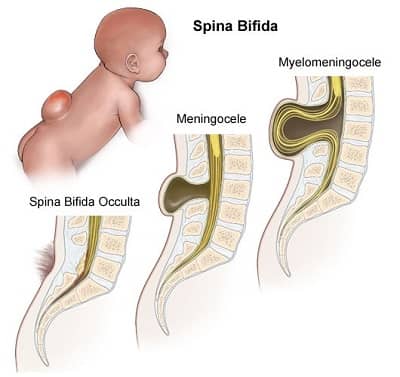There has long been a theory about the preventive role of vitamin B9 in relation to malignant processes. This antioxidant is widely used in obstetrics and is prescribed for pregnant women.
Employees of the American Academy of Pediatrics analyzed the 22-year period of folic acid use in pregnant women - from 1986 to 2008. in the key to cancer prevention in children 0-4 years old. Results in the current material.
Justification
For a period of 22 years (1986-2008), in the United States, among children from 0 to 4 years old, 8829 cases of malignant neoplasms were detected. Of these, 3790 episodes before the introduction of folates and 3299 after the widespread use of vitamin B9 for pregnant women during fetal development.
With the improvement of instrumental diagnostic methods, the opinion among medical scientists was that some forms of cancer in young children were laid in utero. In particular, Wilms tumors (nephroblastoma) and primitive neuroectodermal tumors from fetal neural tube tissues.
Epidemiological studies have led scientists to believe that intrauterine cancer is associated with the level of folic acid in the mother's body.
The main point of folate application is the normalization of DNA methylation processes, thereby reducing the number of errors in the process of cell division. In particular, with chronic folic acid deficiency, the level of thymine decreases, in place of which uracil is inserted into the DNA, leading to genome errors.
And such a theory finds more and more adherents.
But the opposite opinion is also expressed: adequate and elevated levels of folic acid contribute to uncontrolled cell proliferation by providing a large number of nucleotide precursors.
The voices of supporters of the first theory sounded louder. In this connection, the US Public Health Service since 1992 recommended enriching the diet of women of childbearing age with folic acid. And since 1996, the FDA has been obliged to saturate all cereal foods with vitamin B9.
Ефективність такого заходу проконтролювали в 1999 році, порівнявши рівень фолієвої кислоти в крові жінок, у середньому по популяції, до, та після 1996 року. The effectiveness of such a measure was monitored in 1999 by comparing the level of folic acid in the blood of women, on average for the population, before and after 1996.

Research organization
As a source of analytical information, we used data from the SEER 9 national registry, which makes 98% of all diagnoses made by 10% of the US population.
It turned out that as of 1991, the folate content in the blood of an average woman was 6.3 ng / ml, and after the mandatory enrichment of cereal with vitamin A, it reached 16.2 ng / ml. That is, increased 2.5 times. The level of folic acid in red blood cells also increased from 181 ng / ml to 315 ng / ml.
Parallel statistical studies of the SEER 9 registry showed that since 1996, the incidence of neural tube anomalies has decreased by 31%.
The attention of the researchers was drawn to the fact that it was not possible to establish a statistically significant trend towards a decrease in the total amount of cancer in young children.
Analysis and conclusions
The frequency of three forms of cancer was statistically significantly reduced: nephroblastoma (Wilms tumor), ependymoma, and primitive neuroectodermal tumors.
A negative indicator is an increase in the number of acute myeloid leukemia over the same period.
To summarize, the researchers acknowledge that they were not able to capture the reliable, statistically significant prophylactic effect of folic acid intake in terms of cancer prevention in young children.
Since against the background of a decrease in the number of neural tube malformations, an increase in blood system tumors is noted.
What we were able to prove for sure was that the FDA initiative on the widespread introduction of folates in the diet of women was fully implemented.
